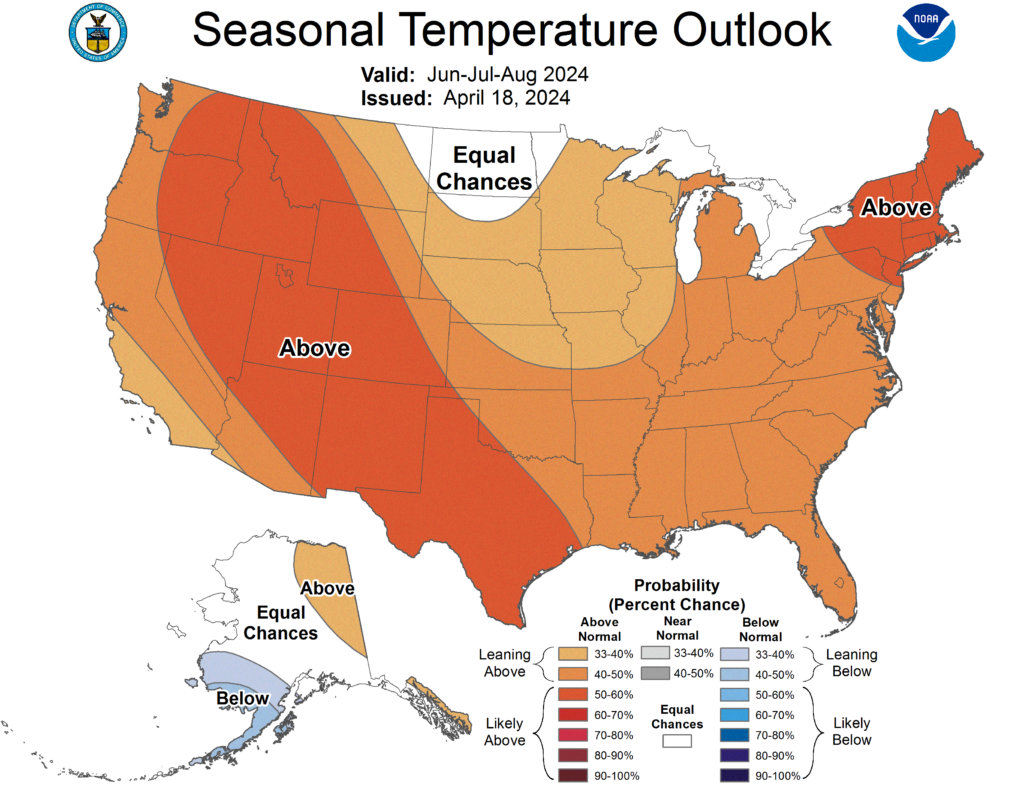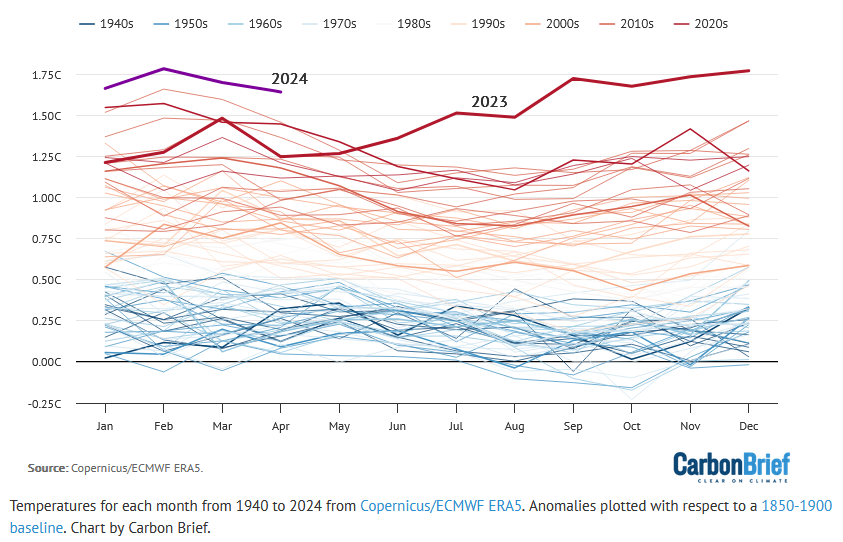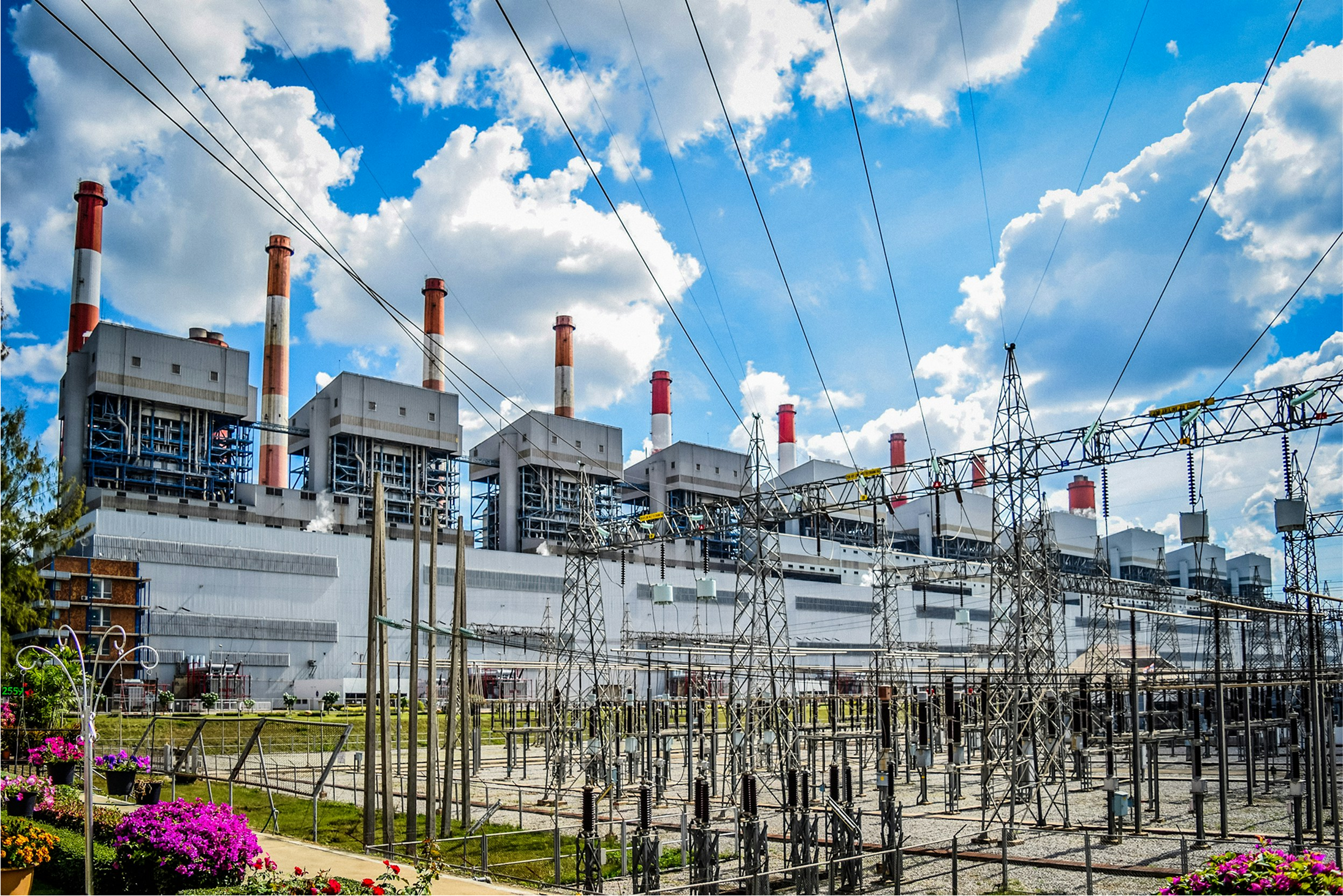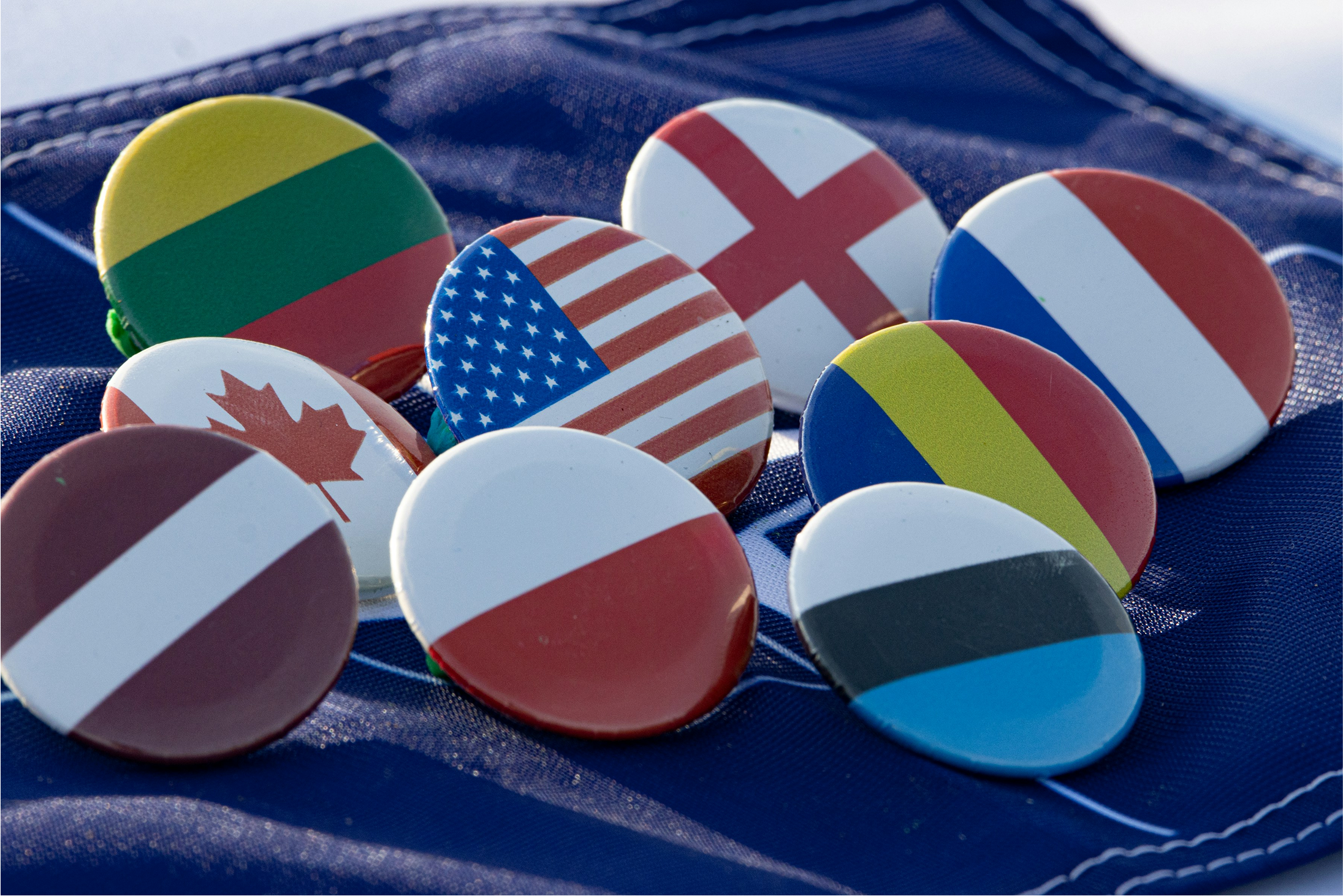Not so surprisingly, NOAA is predicting a long hot summer for the US too.

https://www.cbsnews.com/news/maps-extreme-summer-heat-us-forecast/
Concerningly, the capacity of oceans to buffer and defer the effects of earth’s energy accumulation may be diminishing:
“Climate change-induced warming and freshening at the surface are projected to stratify the upper ocean, which will reduce the overturning of these water masses, in turn reducing their capacity to uptake heat. This would have profound implications for the rate of future anthropogenic climate change.”
And, overall – 2024 is poised to build on a trend of progressively hotter temperatures around the world.
 https://www.carbonbrief.org/state-of-the-climate-2024-off-to-a-record-warm-start/
https://www.carbonbrief.org/state-of-the-climate-2024-off-to-a-record-warm-start/
In the face of this trend to warmer temperatures around the world, there is some reason to be concerned about a feedback loop between rising ambient heat, increased use of air conditioning, greater energy loads to power that air conditioning, and a growth in the climate-forcing emissions produced by powering that air conditioning.
Air conditioning comprises 6% of the US electricity load. That’s a lot, but as air conditioning becomes more necessary and more ubiquitous among populations living closer to the equator, some project that air conditioning will represent a larger share of the global electricity load.
https://climable.org/blog/airconditioningpart1
And, beyond the issue of climate-forcing emissions that are a byproduct of energy generation, the most widely available air-conditioning technology uses refrigerants that are themselves formidable climate-forcing compounds. And they leak.
Is it all bad news? Well no actually.
Have you ever bent a wire in your bare hands and noticed the place where you bent it was warm to the touch? You might not have known the word for it at the time, but you were demonstrating what’s emerging as a hot area in the science of cooling: “elastocalorics.”
How hot? The World Economic Forum just listed Elastocalorics in its Emerging Technologies Report for 2024, which lists ten new technologies poised to impact the world in the next three to five years: According to WEF:
“Elastocaloric technology enables cleaner, more efficient heating and cooling. It utilizes the caloric effects of materials (specifically, “shape-memory alloys”) to manage temperatures. These alloys undergo a process known as the “elastocaloric effect,” where they absorb or release latent heat when mechanically stressed or relaxed – making them highly effective for energy-efficient air conditioning, refrigeration, and heat pumping. The technology is sustainable because it uses solid refrigerants that do not contribute to global warming, and it uses far less energy than traditional systems. In general, its versatility means it can be applied in multiple ways to improve energy efficiency.”
To be fair – it is still somewhat early days for elastocalorics. While the scientific principles are understood, and universities around the world are developing experiments and prototypes, we have not yet reached the commercialization and scale-up stages of this technology. That suggests plenty of “blue ocean” space available for both enterprising technology providers, and also for architects of national industrial strategy, who would be well-served to place bets in spaces that are not already crowded, or worse, dominated by others.
For the broader community, concerned with the pace and direction of climate change, the heat around this new area of cooling offers hope. Humanity will not run out of imagination or ingenuity to solve for important problems like climate-friendly cooling. The bolder the steps we take today towards better sustainability, the more time we’ll buy for tomorrow’s technologists to finish the work we’ve started.




